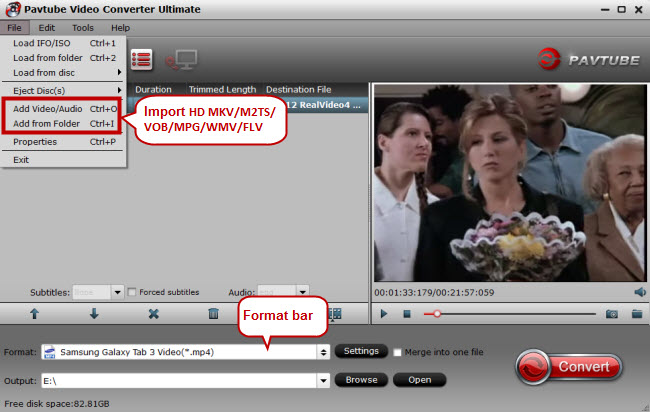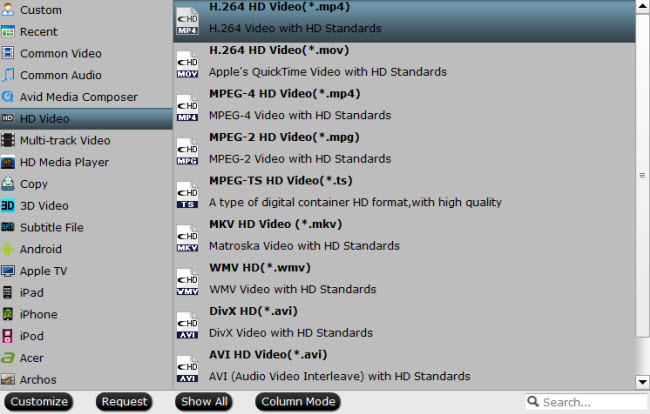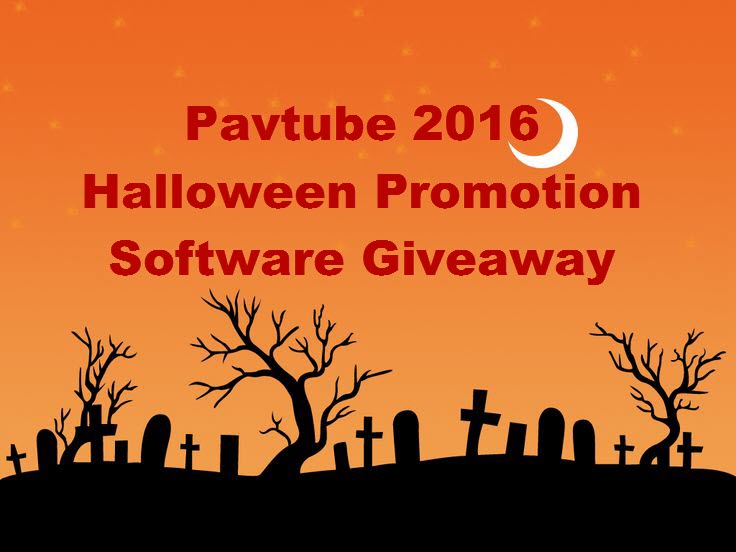What’s that you say? You don’t like trusting your data to Apple, Google, Microsoft or anyone else? Well you can always try the do-it-yourself way to have cloud storage. That’s to use ownCloud to set up your own cloud storage either on an office server or off your own external service. There are ownCloud desktop clients for Linux, Mac OS X, and Windows and mobile apps for Android and iOS. You can also use the WebDAV protocol, an HTTP extension, to directly integrate ownCloud drives into your local file system. Maybe you have downloaded 1080p movies from some online websites like YouTube, IMDB, Vimeo, etc and want to upload them to ownCloud smoothly, just keep reading to get the smart method.
 Using Pavtube Video Converter Ultimate ( Mac) is the best way, it can convert any downloaded 1080p movies to ownCloud – the mobile – or home-theater-friendly format of your choice. (read best digital formats for storing movies)
Using Pavtube Video Converter Ultimate ( Mac) is the best way, it can convert any downloaded 1080p movies to ownCloud – the mobile – or home-theater-friendly format of your choice. (read best digital formats for storing movies)
The best 1080p movie to ownCloud converter offers powerful yet easy-to-use functions, excellent video/audio quality, and fast ripping speed. It is not only a professional yet easy-to-use ownCloud application that helps you convert your downloaded movies to whatever video or audio files. It is also your ultimate solution to convert any videos and movies like DVD, Blu-ray, H.265, AVI, MKV, MP4, Tivo, etc for storing in ownCloud and other Cloud storages like Dropbox, Google Drive, Sky Drive, iCloud, Amazon Cloud Drive, Box Cloud Storage,, etc, or playing on all Windows media players, Apple iPhones, iPads, iPods, Apple TVs, Android tablets and smartphones, Surface tablets, BalckBerry, Sony PSP, PS3/PS4, Xbox 360/One, Wii, Roku, WD TV Live, etc. (Read Review to learn more.)
Free download the best movie to ownCloud converter for Windows:


Other Download:
– Pavtube old official address: http://www.pavtube.cn/blu-ray-video-converter-ultimate/
How to Share downloaded 1080p movies on ownCloud perfectly?
Step 1. Click “Add video” button to add your video files to the program. Or directly drag the video you want to convert to the left item bar.

Step 2. Click “Format” bar, and select .mp4 from “Common video” or “HD video” to fit ownCloud for smooth storing and sharing.

Tips: The default settings may not satisfy you, and you can click the “Settings” button to change the settings by yourself including video resolution, bit rate, audio sample rate, audio channel etc. for full screen playback smoothly. Or keep no changes, which is also a good choice.
Step 3. Click the “Start conversion” button on the main interface and the software will start to convert downloaded 1080p movies to ownCloud friendly video formats immediately. When the conversion done, click “Open” to find the converted video files. Then you can effortless transfer the video files to ownCloud easily.
More Tips: Cloud backup vs. cloud syncing
Cloud backup is exactly what it sounds like. Your data is stored in an online repository, where it’s accessible to you when you need it. It works like this: You download a desktop client to your PC, select the folders you want to back up, and that data uploads to the service on a set schedule. Then if catastrophe strikes, such as a house fire or robbery, you have a clean, up-to-date copy of your data stashed on a server somewhere, all safe and sound.
Cloud backup does not eliminate the need for a local backup on an external hard drive of some sort, but it provides an easy solution for keeping another backup off-site. Your other options are to circulate a few hard drives that you keep in a safe at the office (a pain to remember), or run a remote server (technically challenging). Pay a few bucks a year to store your hard drive data online with a third-party provider is the easiest choice for most people.
Finding a service is easy enough, too. There’s Backblaze (the service I currently use), Carbonite (a service I have used), Mozy, SpiderOak (another service I’ve used), and many others.
The hard part is understanding how to use cloud storage and familiarizing yourself with some of the details you might not think about.
It’s important to clarify the difference between a cloud backup service and a sync service like Dropbox or Google Drive. If you need a few files always in sync among multiple PCs or mobile devices, you’d be better off relying on a sync service. With a backup service, you could definitely pull out individual files in a pinch, but the user interface is usually a little cumbersome for grabbing files compared to, say, Dropbox’s.
Most mainstream cloud storage backup services offer what’s essentially unlimited backup, though limits of some sort will apply. The only exception to that rule is SpiderOak, which sets data storage limits but offers a higher degree of encryption and security than most services. Skip any cheap service that limits your data to 500GB or 1TB.
Take the time to figure out what the rules are for your backup service. In general, online backup services let you save any personal files on your PC. Some services also let you back up connected drives as part of the price, while others will charge extra for it.
Even if your plan does allow external hard drives, that doesn’t mean you can back up home servers or RAID boxes with multiple hard drives. You’ll also have to reconnect your external hard drives regularly to avoid having your saved content deleted from your cloud backup.
Have more questions about Dropbox vs Google Drive, please feel free to contact us>> or leave a message at Facebook
More Topics:


Leave a Reply
You must be logged in to post a comment.